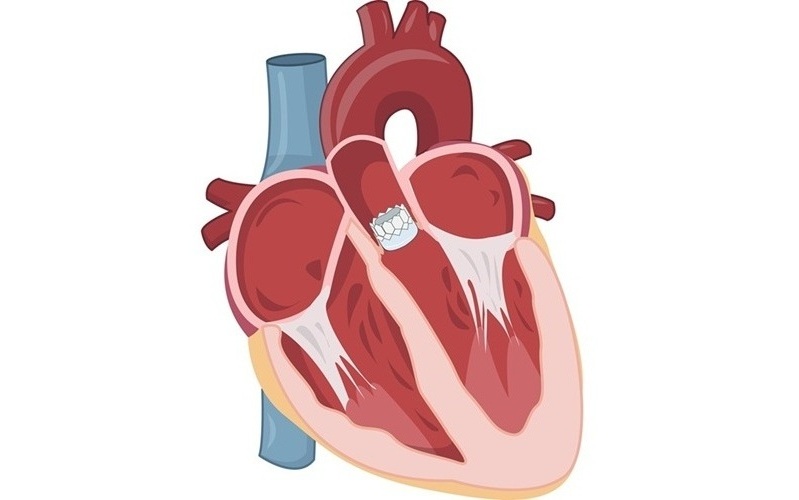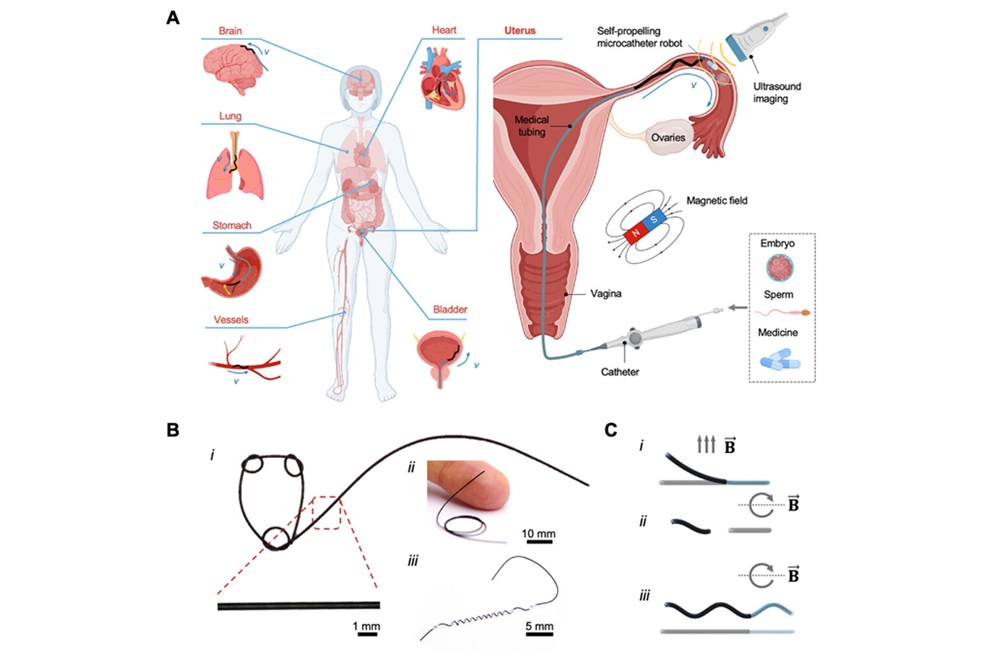Newly-Developed Enzyme Could Treat Mysterious Multisystem Complications of COVID-19
|
By HospiMedica International staff writers Posted on 11 Aug 2020 |

Illustration
Scientists have developed a first-in-class DNASE1L3 enzyme analog, NTR-441, that has the potential to rapidly and systemically clear neutrophil extracellular traps (NETs) for severe cases of COVID-19.
The enzyme has been developed by Neutrolis (Cambridge, MA, USA), a biotechnology company developing therapeutics that target neutrophils, the most abundant immune cells in the body. NTR-441, an engineered analog of the natural NET-destroying enzyme DNASE1L3, is the world's first investigational drug that can be systemically delivered to accurately target NETs.
NETs are a fundamental arm of the immune system and play an important role in chronic and acute diseases. NETs are sticky, web-like structures made of chromatin—DNA studded with structural proteins—and expelled by suicidal neutrophils. NETs block air sacs and blood vessels in the lungs, trigger hyperinflammation and blood clotting (thrombosis), potentially causing irreversible end-organ damage and death.
Several independent investigators have observed NETs in the lungs of autopsied COVID-19 patients, and observed that NETs biomarkers in patient blood correlate with the clinical severity of COVID-19. In patients with severe COVID-19, the circulating levels of DNASE1L3 are not adequate to counteract the rapid and systemic formation of NETs. NTR-441 has the potential to systemically clear NETs in the vasculature and end organs like the lungs in patients suffering from severe COVID-19.
"We believe NETs are the common factor that explains the mysterious multisystem complications of COVID-19," said Toby Fox, Ph.D., Chief Executive Officer and Co-Founder of Neutrolis. "Our lead compound, NTR-441, and other molecules from our Chromatinase platform are the only drugs currently in development that could systemically remove NETs from the body. Thanks in part to competitive funding from the National Institutes of Health (R43HL150944), we will test whether NTR-441 is effective in ARDS, the most lethal manifestation of COVID-19."
Related Links:
Neutrolis
The enzyme has been developed by Neutrolis (Cambridge, MA, USA), a biotechnology company developing therapeutics that target neutrophils, the most abundant immune cells in the body. NTR-441, an engineered analog of the natural NET-destroying enzyme DNASE1L3, is the world's first investigational drug that can be systemically delivered to accurately target NETs.
NETs are a fundamental arm of the immune system and play an important role in chronic and acute diseases. NETs are sticky, web-like structures made of chromatin—DNA studded with structural proteins—and expelled by suicidal neutrophils. NETs block air sacs and blood vessels in the lungs, trigger hyperinflammation and blood clotting (thrombosis), potentially causing irreversible end-organ damage and death.
Several independent investigators have observed NETs in the lungs of autopsied COVID-19 patients, and observed that NETs biomarkers in patient blood correlate with the clinical severity of COVID-19. In patients with severe COVID-19, the circulating levels of DNASE1L3 are not adequate to counteract the rapid and systemic formation of NETs. NTR-441 has the potential to systemically clear NETs in the vasculature and end organs like the lungs in patients suffering from severe COVID-19.
"We believe NETs are the common factor that explains the mysterious multisystem complications of COVID-19," said Toby Fox, Ph.D., Chief Executive Officer and Co-Founder of Neutrolis. "Our lead compound, NTR-441, and other molecules from our Chromatinase platform are the only drugs currently in development that could systemically remove NETs from the body. Thanks in part to competitive funding from the National Institutes of Health (R43HL150944), we will test whether NTR-441 is effective in ARDS, the most lethal manifestation of COVID-19."
Related Links:
Neutrolis
Latest COVID-19 News
- Low-Cost System Detects SARS-CoV-2 Virus in Hospital Air Using High-Tech Bubbles
- World's First Inhalable COVID-19 Vaccine Approved in China
- COVID-19 Vaccine Patch Fights SARS-CoV-2 Variants Better than Needles
- Blood Viscosity Testing Can Predict Risk of Death in Hospitalized COVID-19 Patients
- ‘Covid Computer’ Uses AI to Detect COVID-19 from Chest CT Scans
- MRI Lung-Imaging Technique Shows Cause of Long-COVID Symptoms
- Chest CT Scans of COVID-19 Patients Could Help Distinguish Between SARS-CoV-2 Variants
- Specialized MRI Detects Lung Abnormalities in Non-Hospitalized Long COVID Patients
- AI Algorithm Identifies Hospitalized Patients at Highest Risk of Dying From COVID-19
- Sweat Sensor Detects Key Biomarkers That Provide Early Warning of COVID-19 and Flu
- Study Assesses Impact of COVID-19 on Ventilation/Perfusion Scintigraphy
- CT Imaging Study Finds Vaccination Reduces Risk of COVID-19 Associated Pulmonary Embolism
- Third Day in Hospital a ‘Tipping Point’ in Severity of COVID-19 Pneumonia
- Longer Interval Between COVID-19 Vaccines Generates Up to Nine Times as Many Antibodies
- AI Model for Monitoring COVID-19 Predicts Mortality Within First 30 Days of Admission
- AI Predicts COVID Prognosis at Near-Expert Level Based Off CT Scans
Channels
Critical Care
view channel
Soft Robots Could Donate Their Heart to Humans
Heart failure is a growing global health burden, and existing artificial hearts and mechanical pumps often fall short of long-term clinical needs. Many current devices rely on rigid components and complex... Read more
Bioadhesive Strategy Prevents Fibrosis Around Device Implants on Peripheral Nerves
Peripheral nerves connect the brain and spinal cord to muscles, organs, and sensory systems, making them key targets for treating neurological and systemic diseases. However, implantable bioelectronic... Read moreSurgical Techniques
view channel
Minimally Invasive Surgery Proven Safe and Effective for Complex ‘Whipple’ Procedure
Tumors of the pancreatic head often require a highly complex operation known as pancreatoduodenectomy or the Whipple procedure. This surgery involves removing multiple structures and creating several internal... Read more
Catheter-Based Procedures Offer Less Invasive Option for Treatment of Valvular Disease
Valvular heart disease, caused by tight or leaky valves between heart chambers, affects up to 10% of older adults and leads to more than 120,000 deaths globally each year. Traditional open-heart surgery... Read morePatient Care
view channel
Revolutionary Automatic IV-Line Flushing Device to Enhance Infusion Care
More than 80% of in-hospital patients receive intravenous (IV) therapy. Every dose of IV medicine delivered in a small volume (<250 mL) infusion bag should be followed by subsequent flushing to ensure... Read more
VR Training Tool Combats Contamination of Portable Medical Equipment
Healthcare-associated infections (HAIs) impact one in every 31 patients, cause nearly 100,000 deaths each year, and cost USD 28.4 billion in direct medical expenses. Notably, up to 75% of these infections... Read more
Portable Biosensor Platform to Reduce Hospital-Acquired Infections
Approximately 4 million patients in the European Union acquire healthcare-associated infections (HAIs) or nosocomial infections each year, with around 37,000 deaths directly resulting from these infections,... Read moreFirst-Of-Its-Kind Portable Germicidal Light Technology Disinfects High-Touch Clinical Surfaces in Seconds
Reducing healthcare-acquired infections (HAIs) remains a pressing issue within global healthcare systems. In the United States alone, 1.7 million patients contract HAIs annually, leading to approximately... Read moreHealth IT
view channel
EMR-Based Tool Predicts Graft Failure After Kidney Transplant
Kidney transplantation offers patients with end-stage kidney disease longer survival and better quality of life than dialysis, yet graft failure remains a major challenge. Although a successful transplant... Read more
Printable Molecule-Selective Nanoparticles Enable Mass Production of Wearable Biosensors
The future of medicine is likely to focus on the personalization of healthcare—understanding exactly what an individual requires and delivering the appropriate combination of nutrients, metabolites, and... Read moreBusiness
view channel
Philips and Masimo Partner to Advance Patient Monitoring Measurement Technologies
Royal Philips (Amsterdam, Netherlands) and Masimo (Irvine, California, USA) have renewed their multi-year strategic collaboration, combining Philips’ expertise in patient monitoring with Masimo’s noninvasive... Read more
B. Braun Acquires Digital Microsurgery Company True Digital Surgery
The high-end microsurgery market in neurosurgery, spine, and ENT is undergoing a significant transformation. Traditional analog microscopes are giving way to digital exoscopes, which provide improved visualization,... Read more
CMEF 2025 to Promote Holistic and High-Quality Development of Medical and Health Industry
The 92nd China International Medical Equipment Fair (CMEF 2025) Autumn Exhibition is scheduled to be held from September 26 to 29 at the China Import and Export Fair Complex (Canton Fair Complex) in Guangzhou.... Read more
















